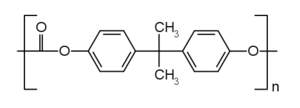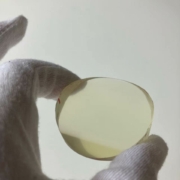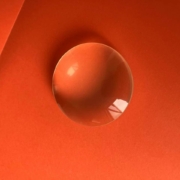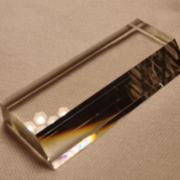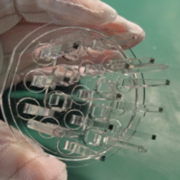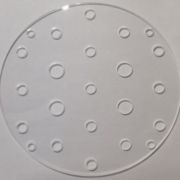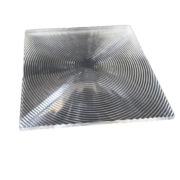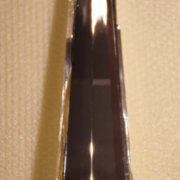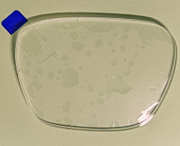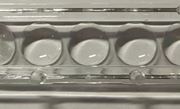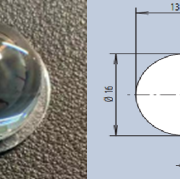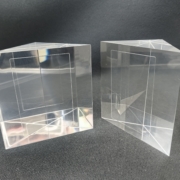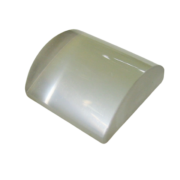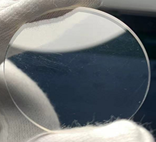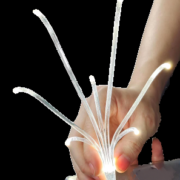Our plastic optics manufacturing solutions
Below you’ll find examples of plastic optics components realised by Sinoptix. Molded plastic lens (PMMA, PC), surface treatments, plastic lenses, LED collimators, lens arrays. Plastic optics are widelly used for lighting applications, as quantities are usually big, optical quality request is average and most of the transmission is requested in the visible range only. Nevertheless some other applications of plastic optics are also possible like Terahertz lenses in PTFE (Teflon) or TPX.
Don’t hesitate to contact us for your specific requests, quick feedback guaranted.
Optical plastic parts:
Plastic optics are used for
- Optical lenses
- Collimators
- Lenses for mass production
- Camera transparent screen protection
- Mirrors
- Lighting optics
- Terahertz optics
Plastics optics advantages & disavantages
| Plastic optics advantages | Plastic optics disadvantages |
|---|---|
| Very low mass production cost | Tooling fees important (unsuitable for small quantities) |
| Reproducibility of aspherical lenses | More difficult to apply surface treatment |
| Weight (lighter than glass) | Less resistant to outside environment (UV, chemical, heat…) |
| Harder to break (more resistant than glass) | More easily skrachable (softer than glass) |
Plastic optics specifications
Two main material are used for optics in plastics : Polymethyl methacrylate (PMMA) or Polycarbonate (PC).
PROPERTIES OF OPTICAL PLASTICS : PMMA & PC
POLY(METHYL METHACRYLATE)
Also called “Acrylic glass”, PMMA is a transparent thermoplastic homopolymer known more commonly by the trade name “Plexiglas.” The material is similar to polycarbonate in that it is suitable for use as an impact resistant alternative to glass(particularly when the high impact strength of PC is not required).
It is generally considered one of the clearest plastics on the market.
PMMA is used for a variety of applications that typically take advantage of its natural transparency and the impact resistance
FOR OPTICAL USE :
Because of its clarity, it is also often used for windows or lenses. The raw material allows for the internal transmission of light nearly in the same capacity as glass which makes it a wonderful substitute.
PMMA is readily available and inexpensive which make a good material option for mass production of lenses.
Moreover, a major useful attribute about thermoplastics like PMMA is that they can be heated to their melting point, cooled, and reheated again without significant degradation. Instead of burning, thermoplastics like Acrylic liquefy, which allows them to be easily injection molded and then subsequently recycled.
Characteristics chart of PMMA
| Characteristic | Data |
|---|---|
| Technical Name | Poly(methyl methacrylate) -PMMA |
| Chemical Formula | (C5H8O2)n |
| Melt Temperature | 130°C (266°F) |
| Thermal resistance | Very good (0.5×10-6 /K) |
| Typical Injection Mold Temperature | 79-107°C (175-225°F) |
| Heat Deflection Temperature (HDT) | 95°C (203°F) at 0.46 MPa (66 PSI) |
| Tensile Strength | 65 MPa (9400 PSI) |
| Flexural Strength | 90 MPa (13000 PSI) |
| Specific Gravity | 1.18 |
| Shrink Rate | 0.2 – 1% (.002 – .01 in/in) |
PROPERTIES OF PC
PC is an amorphous thermoplastic with good transparent properties, but also available in many different colors. The choice for PC is usually made for product requiring transparency, impact resistance along with heat resistance.
Impact resistance comparatively with other commonly used plastic products:
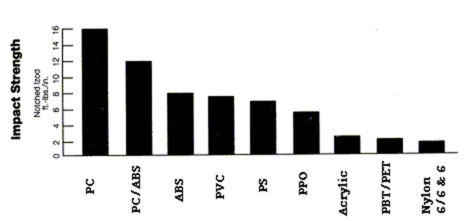
FOR OPTICAL USE:
PC is commonly use for plastic optics through a molding process. Injection molding is a highly efficient method of reproducing optics with complex surface geometries. As a result, optics can be molded in varying volume requirements with a very high degree of part-to-part repeatability. However, due to high mold and set up costs this special process is only interesting for large quantities (usual minimum of 1000 parts).
Coating can also be applied such as AR, individual band pass or protection films.
Characteristics chart of PC
| Characteristic | Data |
|---|---|
| Technical Name | POLYCARBONATE (PC) |
| Chemical Formula | C15H16O2 |
| Melt Temperature | 288-316 °C (550-600 °F) |
| Typical Injection Mold Temperature | 82 – 121 °C (180 – 250 °F) |
| Heat Deflection Temperature (HDT) | 140 °C (284 °F) at 0.46 MPa (66 PSI) |
| Tensile Strength | 59 MPa (8500 PSI) |
| Flexural Strength | 93 MPa (13500 PSI) |
| Specific Gravity | 1.19 |
| Shrink Rate | 0.6 – 0.9 % (.006 – .009 in/in) |
HOW MUCH COSTS PLASTIC OPTICS ?
As different manufacturing process coexist like diamond turning and optical plastic injection it is important to understand that requested quantities and specifications will be key for price evaluation of your plastic optics.
Thanks to send us all the requested information and if possible 3D drawing of the part to quickly receive a quotation from our side.
PLASTIC LENS PROTOTYPING
Are you looking at reliable and cheap solution for the realization of your plastic optical projects? Sinoptix is now offering the realization of prototypes for your plastic optical components. Prototypes can be made out of different plastics materials such as PMMA, Zeonex, Macrolon, PC. Bellow, our range of optical plastic technical solutions for your prototypes:
| Technology | Details | Advantages | Inconvenients | Usage |
| Injection | Temporary fixtures | -Part of the prototype development costs will be deducted from mass production mold costs. | -only interesting if mass production injection is expected after prototyping -Longer to be set up – Draft angle to be expected | Design almost validated Pre-production series and mass production |
| CNC machining | Cutting, polishing, centering | -Lower cost for simple shape products | -Require several processes and equipment settings -Not appropriate for small quantities | Complex shapes, Prototype validation for sketchy optical parts |
| Diamond turning machining | lathe of precision | -Great accuracy -No other polishing process needed | -Less shapes available than CNC turning | Aspherical and free form optics |
| 3D printing | Material added by microdrip | -Low cost | -Aspect | Optical lightning |


